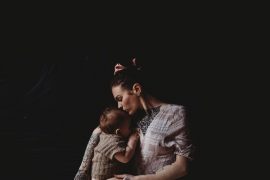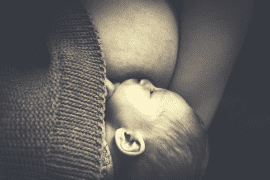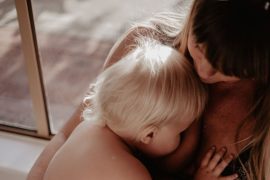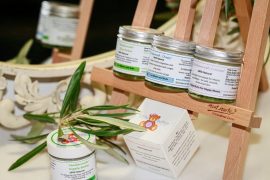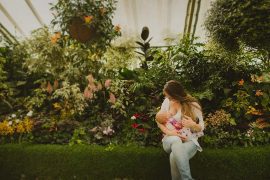What about weaning breastfeeds in the daytime?
Once you have broken the sleep prop, the process will get easier. You will need to ensure of course that naps can happen without breastfeeding. Now the rest of the weaning is about distraction.
We are trying to avoid the need for refusal. This is a key aspect of weaning all older nurslings. You sometimes hear the phrase ‘Don’t offer, Don’t refuse’ used as a weaning technique. It will work for everyone in the end but sometimes we need to jiggle our day around so we don’t actually get to the point of being asked if we want weaning to happen more quickly.
Once we get to the point of being asked, refusal means rejection. Not just a missing out on milk but a rejection from mummy. The request and breastfeed was a way that toddler communicated with you. He asked and it happened and it was magic. It was a dialogue between you that made him feel empowered and special. Really not just about the milk.
What other things can be ask for? Make a special box of books he can request. Make a snuggly book nest with pillows and beanbags. Instead of asking for a breastfeed, he could lead you by the hand and ask for a ‘book cuddle’. Or a dance? Or a big squeezy cuddle with a raspberry on his neck?
You may need to restructure your day for a while – more time outside or at activities. Perhaps meals as a picnic if he normally asks for feed at the dinner table and climbs onto your lap. Perhaps moving the special chair where he normally asks for a feed. In the morning, it’s a big hug and a scoop out of bed and a race downstairs to find the little ice cube tray full of fun snacks to avoid the morning feed. Or Thomas The tank Engine says good morning in a silly voice before mummy says a word. Distraction.
You may need to get up a little earlier for a while so you’ve got the energy to think ahead before he wakes and starts asking.
When you see the glint in his eye that indicates an ‘ask’ is on its way, think imaginatively. It’s really not about offering a cup of cow’s milk instead.
Some toddlers will do really well with limits. Some are starting to become fascinated by counting. If you’ve not managed to avoid ‘the ask’, how about? “We’ll have milkies for as long as it takes mummy to count to ten”. Count as fast or as slow as you like. You are in control. Talk about what you will be doing next. If there’s a big protest at the end of a feed? “OK, one more. Do you want ‘count to ten’ or ‘count to eleven’?” He is control too.
Pre-schooler Billie
A lot of the techniques will be the same for three-year-old Billie. She’ll also need to learn how to drop to sleep without the breast and transition between sleep cycles in another way. It’s likely she’ll have a much greater understanding of what’s going on and you can talk about your plans together.
You may decide to use a token system. Each morning you could give her 2 or 3 (or however many) tokens and she can swap them for breastfeeds at any time but she won’t get new tokens until tomorrow. The tokens may be plastic gold coins (that one seems a bit too ‘Wolf of Wall Street’ for some) or perhaps little stretchy bracelets that she wears in the day and takes off each time she wants to ‘buy’ a breastfeed.
Again – you are both in control. She gets to decide whether to hold on to her tokens. When she requests a feed you might talk through her decision: “Are you sure? Because that means you only have one left for tonight? It’s up to you but maybe check you’re really sure.” You may well find she gains comfort from keeping that last one ‘just in case’ and it never gets used. Gradually there are fewer tokens given.
She would also be old enough to talk about a weaning party or special treat. We don’t want too much emphasis on the ‘you’re a big girl now’ stuff because that sounds pretty scary. Big girls want cuddles and mummy too – but she might be ready for something new that celebrates her moving on.
It’s OK to talk about what’s happening. This is her first intimate relationship and you are teaching important lessons about empathy and understanding. Mummy’s milkies are getting ready to stop breastfeeding soon. We will find new ways to give cuddles and be close. A three year old may also have ideas about a cosy reading corner and a new bedtime routine.
Remember
This might not be easy but you are allowed to stop. You have given such a magical gift to your child but that doesn’t mean you have to continue breastfeeding beyond a point that feels right for you. I once heard a mother of a toddler say she simply couldn’t ‘bear’ breastfeeding anymore. She counted the seconds in her head until each feed finished and felt physically uncomfortable. Is it in that toddler’s interest for his mother to carry on?
If we say mothers of older nurslings are not allowed to wean, we will be frightening people of younger children who will feel stuck on a path. We do not want a world where mothers of nine month olds are ending breastfeeding because ‘it’s easier when they’re younger’.
Breastfeeding can continue when it’s right for toddler AND mother. It can also end when it feels right.
There are forums and Facebook pages with other mums in your situation who you may be able to share your decision and your journey with. You can make up your own rules. You may decide to pause along the way. Perhaps when you have finished night-weaning, it will suddenly seem more manageable for a while. Just see how you feel.
Originally published HERE.
After a career as a Deputy Headteacher in central London, Emma initially trained with UK charity Association of Breastfeeding Mothers (www.abm.me.uk), qualifying as a breastfeeding counsellor with them in 2007. She is currently their chair. She qualified as a Board Certified Lactation Consultant (IBCLC) in 2011 and combines a small private practice with volunteering at two groups a week and answering calls on the National Breastfeeding Helpline. You can find her on Twitter as @makesmilk. She spoke at the UNICEF Baby Friendly UK conference in November this year on the theme of responsive feeding. Her book, “You’ve Got It In You: a positive guide to breastfeeding” can be found on Amazon and from other retailers: http://www.amazon.co.uk/dp/B019JE5E44


